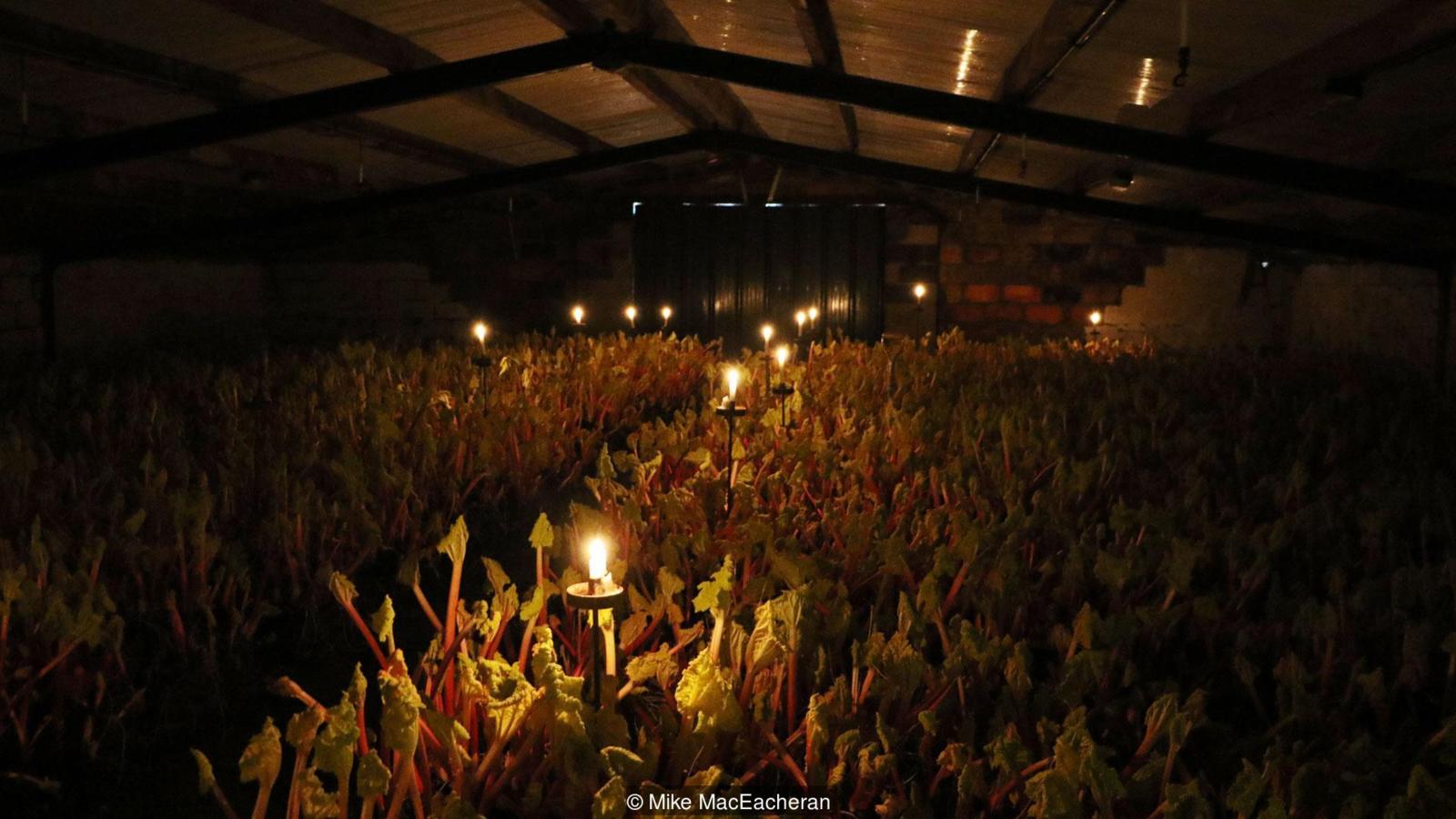The English vegetable picked by candle light

A notoriously fickle vegetable to harvest, Yorkshire forced rhubarb is anything but easy to grow. It thrives in the county’s cold winters, but if the soil is too wet, it can’t be planted. If the temperature is too hot, it won’t grow; and 10 or more frosts are needed before a farmer can even think about forcing it. Only then can horticulturalists remove the heavy roots from the field, then clean and replant them inside the forcing sheds where photosynthesis is limited, encouraging glucose stored in the roots to stimulate growth. It demands patience, expertise and good fortune, and, ultimately, it is engineered for maximum taste: once deprived of light, the vegetable is forced to use the energy stored in its roots, making it far sweeter than the normal variety.
For a simple vegetable, rhubarb has come a long way since it was discovered growing wild on the banks of the River Volga. Cultivated from Siberia to China as far back as 2700 BC, where it was used for its healing properties, it was transported along the Silk Road to Italy in the 13th Century by Marco Polo. It once commanded three times the price of opium and saffron, and was weighed against gold.
It took another three centuries – up to around the 1620s – before it was brought to England by Sir Matthew Lister, royal physician to James I and Charles I, and used as a cathartic food to purge the body of illness. That would have been the end of the story if it wasn’t for scientists at London’s Chelsea Physic Garden, who discovered the forcing process by chance. Covering up leftover rhubarb crowns – the underground part of the plant – with soil in 1817, the gardeners were stunned weeks later when the robust plant produced a shock of sweet pink stems and frilly leaves.